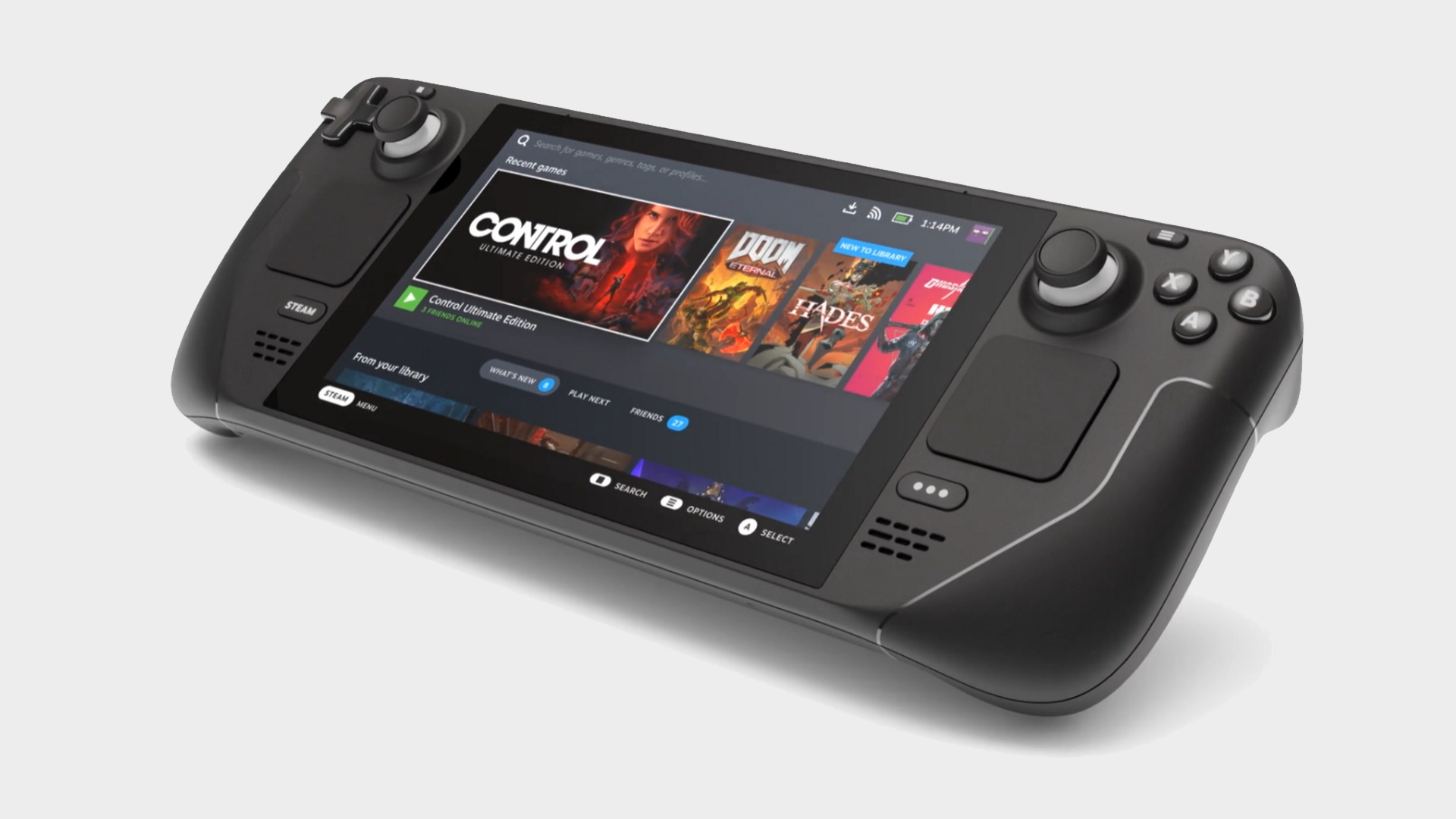First tests show Steam Deck SD card speed rivals the SSD


(Image credit: Valve)
If you plan to pick up a Steam Deck, don’t forget to kit it out with a bunch of accessories, like headphones, USB hubs, and portable chargers. Here’s a list of our favorite ones.
The cheapest version of the Steam Deck might be a better deal than you think. Pre-release testing on Valve’s handheld shows micro SD card load times are almost as fast as the SSD in several games. The undersized 64 GB of internal eMMC storage on the budget Steam Deck might not be an issue if you can slot in a hefty SD card and barely notice a difference.
Linus Tech Tips and The Phawx both tested load times on the Steam Deck and found that micro SD load times were almost identical to the SSD in games like Control, Dead Cells, and Street Fighter 5. In some cases the micro SD load was a mere 2 seconds behind, while in others there was no measurable difference: it was just as fast.
Portal 2 and Ghostrunner lagged behind on the micro SD by about 10 to 17 seconds, though, so real-world results could vary a lot depending on which games play well Proton and the Steam Deck’s hardware. This is far from a complete picture: Valve only approved testing on a small handful of games, and the Steam Deck’s software still isn’t finished. Still, that’s impressive for a system that maxes out its internal storage at 512 GB for the $649 model—solid micro SD performance might be a boon in the long run considering how big game install sizes are now.
The Steam Deck uses an NVMe SSD, which should provide very snappy load times for games. It’s why we recommend them for anyone building or upgrading a gaming PC. Unlike older SATA SSDs, NVMe drives work like a GPU and link directly to the motherboard, opening the door to much higher transfer speeds. If we can get micro SDs to load games in a similar fashion, that’ll help with the low-end model’s lack of an NVMe drive.
In its teardown video of the device, Valve said it doesn’t recommend swapping the internal SSD out yourself even if it’s totally possible. “Our SSD is located very close to our wireless module, and was specifically chosen and tested to not interfere with Wi-Fi and Bluetooth,” Valve said.
Instead of risking the functionality of your device, it’s starting to look like slotting in a good SD card might be the way to go. It’s easy, risk-free, and a terabyte of storage only costs about $150. (But we’re still going to try putting one of these new Micron NVME SSDs in the Steam Deck the first chance we get.)


Leave a Reply